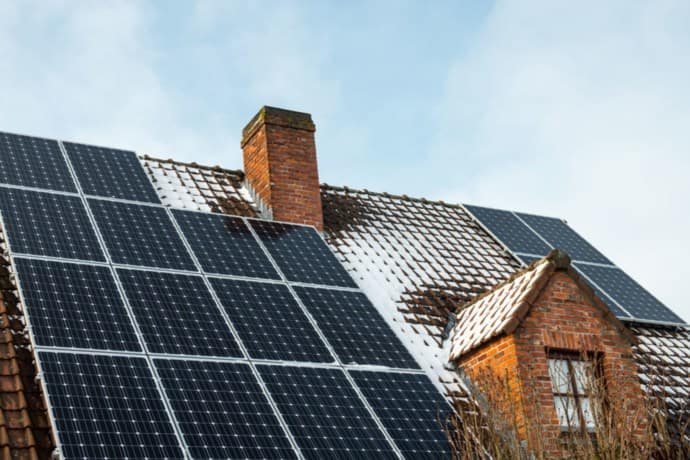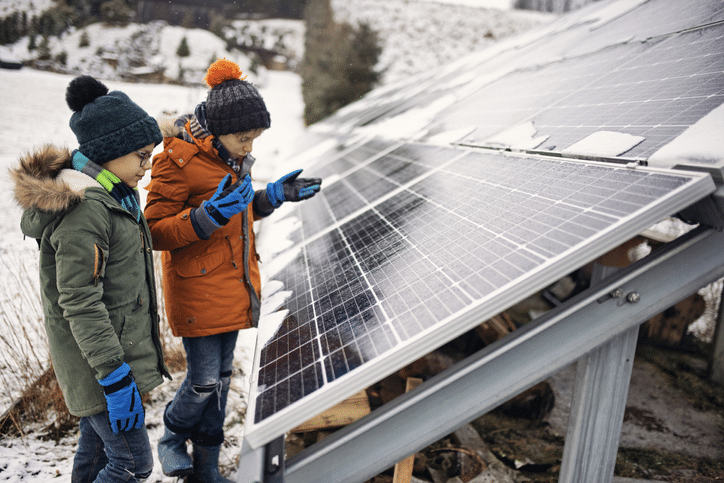Solar panels have become an increasingly popular source of renewable energy over the years. They are designed to capture sunlight and convert it into electricity, which can be used to power homes and businesses. However, many people wonder whether solar panels work in the winter, especially in cities that experience long and harsh winters.
Do solar panels work in winter? The answer is yes, solar panels can still generate electricity during the winter months. However, their performance may be affected by a number of factors, including the amount of sunlight available, the temperature, and the presence of snow or ice.
Practical City Examples
📍 Anchorage, Alaska
Let’s take the city of Anchorage, Alaska as an example of a city that experiences long and harsh winters. Anchorage has an average temperature of around -10°C (14°F) in the winter months and receives only about 5 hours of sunlight per day. Despite these conditions, Anchorage has a growing solar industry, with many homes and businesses installing solar panel systems to generate their own electricity.
The efficiency of solar panels in Anchorage during the winter months may be lower due to the reduced amount of sunlight and cold temperatures. Solar panels are typically less efficient in colder temperatures, as the chemical reactions that occur within the panels slow down. However, this decrease in efficiency can be compensated for by installing additional solar panels, which can generate more electricity even in low-light conditions.
Another factor that can affect the performance of solar panels in winter is the presence of snow and ice. In Anchorage, snow and ice can accumulate on solar panels and reduce their efficiency. However, many solar panel installations are designed to allow snow to slide off easily, and regular snow removal can help maximize their performance in the winter.
Despite these challenges, solar panels can still generate a significant amount of electricity during the winter months in Anchorage. In fact, the Alaska Center for Energy and Power estimates that a well-designed and maintained solar panel system can generate up to 50% of its annual energy production in the winter months.
📍 Alberta, Canada
Another example of a city that experiences long and harsh winters in Calgary, Alberta in Canada. Calgary has an average temperature of around -8°C (18°F) in the winter months and receives only about 6 hours of sunlight per day. Despite these conditions, Calgary has also seen a growing interest in solar panel installations in recent years.
The efficiency of solar panels in Calgary during the winter months may be lower due to the reduced amount of sunlight and cold temperatures. However, like Anchorage, Calgary receives a significant amount of snowfall during the winter months, which can actually help improve the performance of solar panels. This is because snow can reflect sunlight back onto the panels, increasing their efficiency.
In addition, many solar panel installations in Calgary are designed to be mounted at an angle, which can help them capture more sunlight even during the shorter winter days. By installing additional solar panels and using techniques like snow removal and panel angle adjustment, solar panels can still generate a significant amount of electricity in cities like Calgary.

Conclusion
In conclusion, solar panels can still work in the winter months, even in cities that experience long and harsh winters. While their efficiency may be lower due to reduced sunlight and colder temperatures, solar panels can still generate a significant amount of electricity with the right installation and maintenance. Additionally, in cities that receive heavy snowfall, snow can actually help improve the performance of solar panels by reflecting sunlight back onto them. And rigid solar panels from Sungold may be a great solution in winter.












